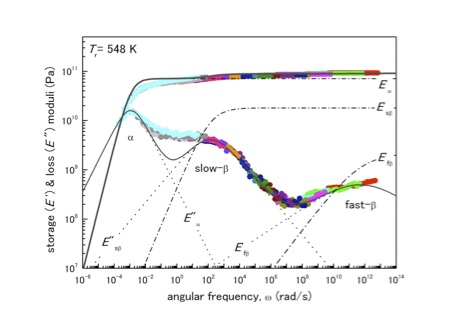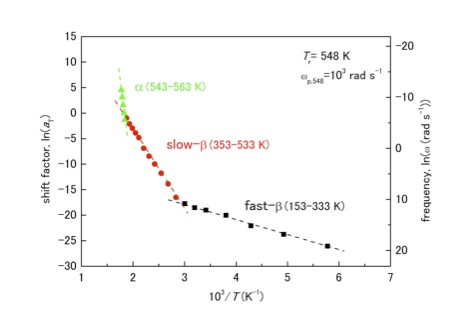

Dynamic Relaxation and Anelastic Behavior in Metallic Glass
Prof. Hidemi Kato
(Institute for Materials Research, Tohoku University)
January 25 (Fri.), 2013 16:00-17:00
Seminar Room, 2nd floor, WPI-AIMR Main Bldg.
Dynamic relaxation of Pd42.5Ni7.5Cu30P20 metallic glass (Tg~ 575 K) was measured in T= 153~ 563 K (27~98% of Tg) with the angular frequency (ω) =10-3~ 102 rad/s under the isothermal condition. By the time -temperature superimpose rule, master curves for storage (E’) and loss (E”) moduli in the angular-frequency range with 16 orders of magnitude were successfully obtained at reference temperature of 548 K. In addition to the α-relaxation and slow-β relaxation, which have been discusses in literatures, the present master curves exhibits another relaxation mode in the lower temperature region (<RT) with activation energy Q= 0.25 eV which is the fastest among three. These dynamic relaxations were characterized with the typical stretched exponent relaxation function, then, the elementary processes for these relaxations were discussed thermodynamically from the activation energy and the attempt frequency. With the characterized relaxation distribution, mechanism of the non-isothermal strain recovery of the stress-annealed metallic glass is discussed.

Fig.1: Master curves of the angular frequency dependence of storage modulus (E′) and loss modulus (E′′) for Pd42.5Ni7.5Cu30P20 metallic glass (reference temperature Tr = 548 K) and the observed triple relaxation modes (α-relaxation (α), slow β-relaxation (sβ) and fast β-relaxation (fβ)).

Fig.2: Temperature dependence of the shift factor and angular frequency for each relaxation mode (high-temperature region: T = 543–563 K, middle -temperature region: T = 353–533 K, and low-temperature region: T = 153–333 K).